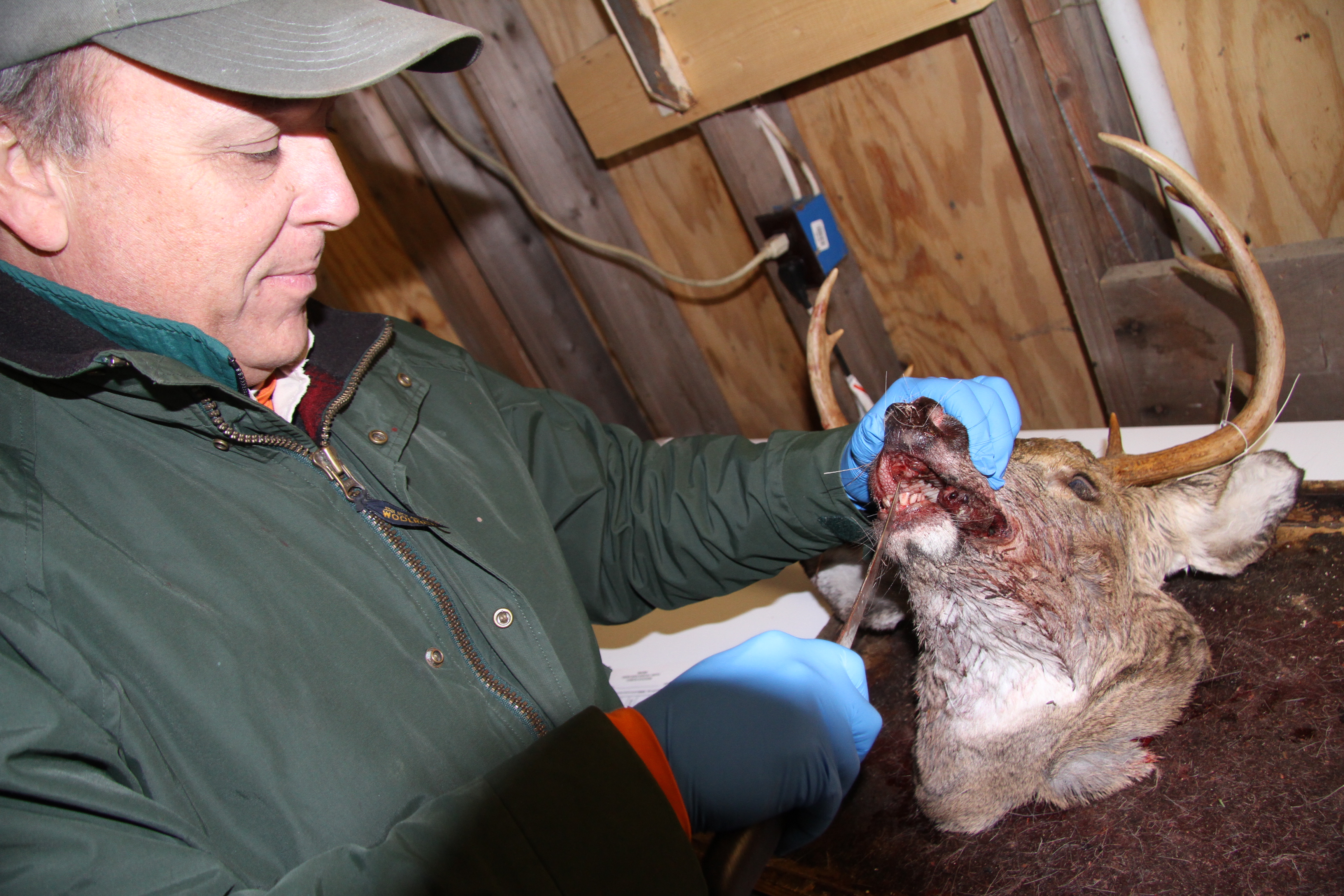November 19, 2013 at 6:26 pm
While many of us are out hunting this deer season, Department of Inland Fisheries and Wildlife regional wildlife biologists are busy hunting for deer as well, knocking on doors and visiting meat lockers, chasing down biological data that will give the department a better glimpse of the health of Maine’s deer herd.
[caption id="attachment_11" align="alignright" width="140"] These deer hang in a walk-in cooler at a deer processor in central Maine[/caption]
These deer hang in a walk-in cooler at a deer processor in central Maine[/caption]
You see, getting a closer look at several hundred dead deer can give a better picture of just how healthy the living are.
IFW Wildlife Biologist Keel Kemper, now in his 25th year with the department, has visited hundreds of meat lockers and handled thousands of dead deer in his career.
Kemper has his routine down to a science. Armed with a pair of calipers and an extremely sharp knife he examines over 500 deer in a season, gathering some key biological data for the department
The central Maine area is the state’s most prolific deer area, a blend of weather, geography and habitat that makes it Maine’s most productive deer region. On a normal day during deer season, Kemper will visit seven deer cutters and handle multiple deer at each one. IFW biologists in regions conduct similar checks throughout the state.
Once at the cutters, Kemper will examine the tag attached to the deer that shows its weight and where it was shot.
[caption id="attachment_8" align="alignleft" width="300"] Examining molar teeth can quickly reveal whether the deer is a yearling deer, or a mature deer.[/caption]
Examining molar teeth can quickly reveal whether the deer is a yearling deer, or a mature deer.[/caption]
After that is recorded, Kemper takes his knife, and slices at the hinge of the mouth to expose the molar teeth. A quick look at the number and condition of the teeth can show whether the deer is a yearling (born last spring) or older.
He will record that data, and if it is a yearling buck, he will measure the antler beam diameter with the calipers and count the number of points on the rack.
[caption id="attachment_10" align="alignright" width="300"] Biologists will remove an adult tooth and later examine a cross section of the tooth to determine the age of a deer.[/caption]
Biologists will remove an adult tooth and later examine a cross section of the tooth to determine the age of a deer.[/caption]
If it is older than a yearling (2 and a half and older), Kemper takes out his knife and quickly removes a tooth by slicing through the gums on the bottom jaw. The tooth is placed in a marked envelope so it can be aged later in the lab.
Kemper will also take note of the general condition of the deer, including fat content, and talk with the cutter to find out more about what they are seeing, how hunters are faring, and other related info. The deer cutters are an invaluable partner in that they provide both biological data with the deer, but also anecdotal evidence concerning hunter effort and participation.
In some cases, biologists will remove a gland to test for chronic wasting disease, and with freshly killed deer, may draw a blood sample to test for eastern equine encephalitis.
All this data is combined to give a clearer picture of the age structure and health of the deer herd, and gives the department the tools they need to manage the deer population.